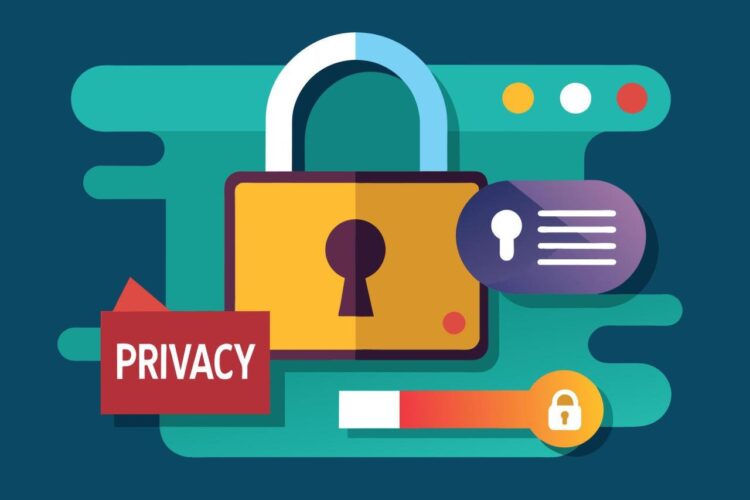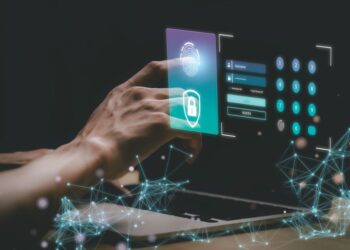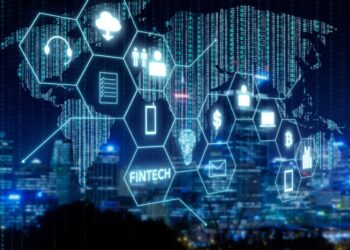In our hyper-connected world, where personal data flows freely across countless platforms and devices, the concept of online privacy has transcended a mere preference to become an urgent, fundamental right. What was once an abstract concern is now a daily reality, as individuals grapple with the implications of their digital footprints being tracked, analyzed, and often monetized. From Browse habits to personal communications, virtually every online interaction leaves a trace, raising critical questions about who owns this data, how it’s used, and the extent to which it impacts our autonomy and security. This comprehensive article delves into the intricate realm of online privacy, dissecting its multifaceted dimensions, illuminating the pervasive threats it faces, outlining the crucial measures for safeguarding it, and charting the ongoing global efforts to build a more secure and respectful digital future.
The Core of Online Privacy

Online privacy is not a monolithic idea; rather, it’s a dynamic and multifaceted concept that encompasses an individual’s right to control their personal information in the digital sphere. It’s about deciding what information to share, with whom, and under what circumstances. This includes everything from identifiable personal details to behavioral data and digital communications.
Key dimensions of online privacy include:
A. Information Privacy: The right to control the collection, use, and disclosure of personal data. This covers data such as names, addresses, phone numbers, email addresses, financial details, health records, and even IP addresses.
B. Communication Privacy: The right to engage in private correspondence and conversations online without unauthorized interception or surveillance. This applies to emails, instant messages, video calls, and private social media interactions.
C. Behavioral Privacy: The right to control information about one’s online activities, such as Browse history, search queries, app usage, and purchase patterns. This data is often used for targeted advertising and profiling.
D. Location Privacy: The right to control the collection and use of real-time and historical geographical location data, often gathered via smartphones or connected devices.
E. Identity Privacy (Anonymity/Pseudonymity): The ability to engage in online activities without revealing one’s real-world identity, or by using a pseudonym, when desired and appropriate.
F. Bodily/Sensory Privacy in Digital Contexts: As wearable tech and IoT devices proliferate, this refers to control over biometric data (heart rate, sleep patterns) and sensory data (audio/video recordings) collected by these devices.
The erosion of any of these dimensions can have significant consequences, ranging from annoying targeted ads to identity theft, discrimination, or even political manipulation. Understanding these distinctions is crucial for appreciating the breadth of the online privacy challenge.
The Imperative for Online Privacy
The growing urgency around online privacy stems from the pervasive digitalization of almost every aspect of human life. What used to be confined to physical spaces now largely transpires in the digital realm, making privacy in this domain critically important.
The imperative for robust online privacy protection is driven by several key factors:
A. Data as the “New Oil”: In the modern economy, data is an incredibly valuable asset. Companies collect vast amounts of user data, often without explicit and informed consent, to build detailed profiles, predict behavior, and drive revenue through targeted advertising or data sales. This monetization creates a powerful incentive for data collection.
B. Risk of Identity Theft and Fraud: Compromised personal data can lead to severe consequences, including financial fraud, identity theft, unauthorized access to accounts, and reputational damage, causing significant emotional and financial distress.
C. Targeted Manipulation and Discrimination: Data profiling can be used not only for advertising but also for more insidious purposes, such as influencing political opinions, disseminating misinformation, or even enabling discriminatory practices in areas like housing, employment, or credit.
D. Erosion of Autonomy and Free Expression: Constant surveillance and the awareness of being tracked can lead to a chilling effect, where individuals self-censor or alter their online behavior, stifling free expression and independent thought.
E. National Security and Surveillance Concerns: Governments and intelligence agencies worldwide collect vast amounts of data, often with legitimate security aims, but also raising concerns about mass surveillance, misuse of power, and potential for abuse.
F. Vulnerability of Sensitive Data: Healthcare records, financial information, and other highly sensitive data, when digitized and stored online, become targets for malicious actors. Protecting this data is paramount for individual well-being and trust in digital systems.
In essence, safeguarding online privacy is about preserving fundamental human rights, fostering a secure digital environment, and ensuring that technology empowers individuals rather than exploits them.
Key Threats to Online Privacy

The digital landscape is rife with threats to online privacy, emanating from various actors and sophisticated methodologies. Understanding these threats is the first step toward effective protection.
A. Data Breaches and Hacking:
A.1. Cyberattacks: Malicious actors exploit vulnerabilities in systems to gain unauthorized access to databases, leading to the theft of millions of user records from companies, governments, and organizations.
A.2. Phishing and Social Engineering: Tricking users into revealing sensitive information through deceptive emails, websites, or social media messages.
A.3. Malware and Ransomware: Software designed to infiltrate systems, steal data, or encrypt files until a ransom is paid, directly impacting data availability and privacy.
B. Extensive Data Collection by Companies:
B.1. Third-Party Trackers and Cookies: Websites embed invisible trackers and use cookies to follow user behavior across multiple sites, creating detailed profiles for advertising.
B.2. App Permissions: Mobile apps often request excessive permissions (e.g., access to contacts, location, microphone) that go beyond their core functionality, allowing for vast data collection.
B.3. Terms of Service: Lengthy and complex privacy policies or terms of service that users “agree” to without fully understanding the extent of data collection and usage.
B.4. Data Brokers: Companies whose primary business is collecting, aggregating, and selling personal data, often without direct user consent or knowledge.
C. Government Surveillance and Data Demands:
C.1. Legal Demands: Governments compelling tech companies to hand over user data for law enforcement or national security purposes, sometimes without judicial oversight.
C.2. Mass Surveillance Programs: Large-scale collection and analysis of communication data, often under broad interpretations of national security laws.
C.3. Lack of Transparency: The opacity surrounding government data requests and surveillance activities makes it difficult for individuals to know if their data is being accessed.
D. User Negligence and Lack of Awareness:
D.1. Weak Passwords and Reused Credentials: Users often employ easily guessable passwords or reuse them across multiple services, making accounts vulnerable.
D.2. Over-sharing on Social Media: Posting excessive personal information, location data, or sensitive details on public platforms that can be exploited by malicious actors.
D.3. Ignoring Privacy Settings: Failing to configure privacy settings on apps and social media platforms, leaving default (often less private) options in place.
D.4. Unsecured Wi-Fi: Using public, unsecured Wi-Fi networks where data can be easily intercepted.
E. Emerging Technologies:
E.1. Facial Recognition: Widespread deployment of facial recognition technology in public spaces and by private entities raises concerns about constant surveillance and profiling.
E.2. IoT Devices: Smart home devices, wearables, and connected cars collect vast amounts of intimate data (e.g., conversations, health metrics, driving habits) which can be vulnerable if not properly secured.
E.3. AI and Predictive Analytics: AI systems can derive highly sensitive inferences about individuals (e.g., health conditions, political leanings) from seemingly innocuous data, often without direct consent.
These threats, individually and collectively, create a complex web of risks that demand constant vigilance and robust protective measures from individuals, companies, and governments alike.
Strategies for Safeguarding Online Privacy
While the threats are formidable, individuals and organizations have a growing arsenal of tools and practices to enhance online privacy.
A. Individual Actions and Best Practices:
A.1. Strong, Unique Passwords & 2FA: Use long, complex, and unique passwords for every online account. Enable two-factor authentication (2FA) wherever possible. Consider using a password manager.
A.2. Review Privacy Settings: Regularly audit and adjust privacy settings on social media, apps, and browsers to limit data collection and sharing.
A.3. Be Mindful of Sharing: Think critically before posting personal information, photos, or location data online. Assume anything shared publicly can be widely seen and used.
A.4. Use Privacy-Enhancing Browsers & Extensions: Opt for browsers focused on privacy (e.g., Brave, Firefox Focus) and install browser extensions that block ads and trackers (e.g., uBlock Origin, Privacy Badger).
A.5. Utilize VPNs: Employ a reputable Virtual Private Network (VPN) to encrypt internet traffic and mask your IP address, especially on public Wi-Fi.
A.6. Understand App Permissions: Review and restrict unnecessary permissions requested by mobile apps. Delete apps you no longer use.
A.7. Regular Data Hygiene: Delete old accounts, clear browser cookies and cache regularly, and unsubscribe from unwanted mailing lists.
A.8. Be Skeptical of Phishing: Learn to recognize phishing attempts and never click suspicious links or open attachments from unknown senders.
B. Technological Solutions:
B.1. End-to-End Encryption: Use communication tools that offer end-to-end encryption for messages and calls (e.g., Signal, WhatsApp for messaging; ProtonMail for email).
B.2. Privacy-Focused Search Engines: Use search engines that don’t track your queries (e.g., DuckDuckGo, Startpage).
B.3. Secure Cloud Storage: Choose cloud providers with strong encryption and clear privacy policies.
B.4. Device Security: Keep operating systems and applications updated, use antivirus software, and enable device encryption.
C. Corporate Responsibilities and Practices:
C.1. Privacy by Design: Integrating privacy considerations into the design and architecture of products and services from the outset, rather than as an afterthought.
C.2. Transparent Data Practices: Clearly communicating data collection, usage, and sharing practices to users in easily understandable language, not just complex legal jargon.
C.3. Robust Security Measures: Implementing strong cybersecurity protocols, regular audits, and incident response plans to protect user data from breaches.
C.4. Data Minimization: Collecting only the data strictly necessary for providing a service, and deleting it when no longer required.
C.5. User Control and Consent: Providing users with clear, granular control over their data and obtaining informed consent for specific data uses.
D. Government and Regulatory Actions:
D.1. Strong Data Protection Laws: Enacting and enforcing comprehensive data protection regulations (e.g., GDPR, CCPA) that grant individuals rights over their data and impose strict obligations on companies.
D.2. Independent Oversight Bodies: Establishing and empowering data protection authorities to investigate complaints, levy fines, and ensure compliance.
D.3. Digital Literacy Initiatives: Funding public education campaigns to raise awareness about online privacy risks and best practices.
D.4. International Cooperation: Collaborating across borders to address global privacy challenges and harmonize data protection standards.
A multi-layered approach, combining individual vigilance with strong technological safeguards and robust regulatory frameworks, is essential for truly protecting online privacy.
The Global Regulatory Landscape and Future Trends
The increasing awareness of online privacy has spurred a global movement towards more robust data protection laws, reshaping how businesses handle personal information.
A. Key Regulatory Frameworks:
A.1. General Data Protection Regulation (GDPR – EU): Arguably the most comprehensive privacy law globally, it grants EU citizens extensive rights over their data, including the right to access, rectify, erase, and portability. It imposes strict obligations on companies worldwide that process EU citizens’ data, backed by significant fines.
A.2. California Consumer Privacy Act (CCPA – USA): Grants California residents rights similar to GDPR, including the right to know what personal information is collected, the right to delete it, and the right to opt-out of its sale. It has influenced other US state privacy laws.
A.3. Personal Data Protection Act (PDPA – Singapore): Focuses on consent-based data collection, purpose limitation, and data protection obligations for organizations.
A.4. Brazil’s Lei Geral de Proteção de Dados (LGPD): Heavily inspired by GDPR, it establishes a comprehensive framework for personal data processing in Brazil.
A.5. India’s Digital Personal Data Protection Act (DPDPA): A new, significant law aiming to protect personal digital data with provisions for consent, data fiduciaries, and user rights.
B. Emerging Trends in Privacy Regulation:
B.1. Focus on AI and Data Ethics: Regulations are beginning to address the ethical implications of AI, particularly concerning bias, transparency, and the use of personal data in AI models.
B.2. Increased Fines and Enforcement: Regulatory bodies are demonstrating a growing willingness to impose substantial fines on companies that violate privacy laws, signaling serious consequences for non-compliance.
B.3. Interoperability and Data Portability: Future regulations may further emphasize the ability of users to easily move their data between different services and platforms.
B.4. De-identification and Anonymization: More stringent standards for what constitutes truly anonymized data, to prevent re-identification.
B.5. Privacy-Enhancing Technologies (PETs): Regulators are encouraging the adoption of PETs like differential privacy, homomorphic encryption, and zero-knowledge proofs to enable data use while preserving privacy.
B.6. Children’s Online Privacy: Heightened focus on protecting the privacy of minors online, with stricter rules for platforms targeted at children.
C. Challenges in Regulatory Harmonization:
C.1. Jurisdictional Differences: The disparate nature of privacy laws across countries creates complexities for global businesses.
C.2. Enforcement Across Borders: Enforcing regulations against companies operating across multiple jurisdictions remains a significant challenge.
The trajectory indicates a clear global movement towards stronger privacy rights, forcing businesses to fundamentally rethink their data practices and prioritize user trust.
The Role of Technology in Privacy Enhancement
Technology, while a source of privacy threats, is also a powerful tool for enhancing it. Innovations are continuously emerging to empower users and secure data.
A. Privacy-Enhancing Technologies (PETs):
A.1. Homomorphic Encryption: Allows computations on encrypted data without decrypting it, enabling data analysis while preserving privacy.
A.2. Differential Privacy: Adds statistical noise to data sets to prevent individual re-identification while still allowing for aggregated analysis.
A.3. Zero-Knowledge Proofs (ZKPs): Enables one party to prove they possess certain information to another party without revealing the information itself.
A.4. Federated Learning: Allows AI models to be trained on decentralized data sets (e.g., on individual devices) without the raw data ever leaving the device, preserving privacy.
B. Blockchain Technology:
B.1. Decentralized Identity: Blockchain can enable self-sovereign identity, giving individuals more control over their digital identities and who can access their verified credentials.
B.2. Transparent Data Provenance: Recording data lineage on a blockchain can provide an immutable audit trail of how data is collected and used.
C. Secure Hardware and Software:
C.1. Secure Enclaves: Dedicated, isolated processing environments within devices (e.g., iPhone’s Secure Enclave) to protect sensitive data like biometrics and cryptographic keys.
C.2. Secure Browsers and Operating Systems: Development of browsers and OSs with built-in privacy features, minimizing tracking and data leakage.
C.3. Open-Source Software: The transparency of open-source code allows for community auditing, potentially identifying privacy vulnerabilities more quickly.
D. AI for Privacy and Security:
D.1. Anomaly Detection: AI can be used to detect unusual patterns that might indicate a data breach or privacy violation.
D.2. Automated Privacy Compliance: AI tools can help organizations automate compliance with complex privacy regulations.
These technological advancements offer promising avenues for building a more secure and privacy-respecting digital infrastructure, empowering individuals and organizations to navigate the complexities of the digital age with greater confidence.
Conclusion
The growing emphasis on online privacy signifies a fundamental re-evaluation of our relationship with technology and data. It’s a recognition that while digital advancements offer immense benefits, they must not come at the cost of individual autonomy, security, and fundamental rights. The shift from a passive acceptance of data collection to an active demand for control underscores a maturing digital society.
Protecting online privacy is not solely the responsibility of individuals; it’s a shared endeavor demanding concerted efforts from all stakeholders. Governments must enact and enforce robust, adaptable regulations. Technology companies must embed privacy by design into their products and operate with transparency and accountability. And individuals must become more digitally literate and proactive in managing their online presence.
The journey towards a truly privacy-respecting digital world is ongoing, marked by continuous innovation, evolving threats, and dynamic regulatory landscapes. However, by prioritizing user rights, fostering technological solutions that enhance privacy, and promoting a culture of digital responsibility, we can collectively build a more trustworthy, equitable, and ultimately empowering online environment. The future of the internet hinges on our ability to safeguard this critical digital right.












